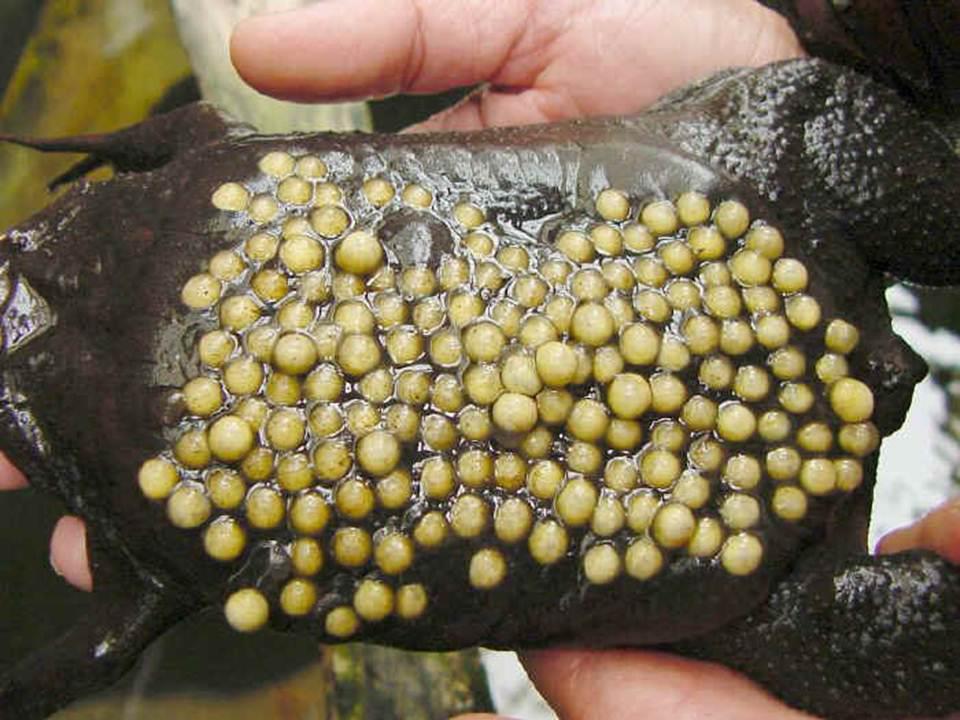In the rainforests of South America lives a strange frog species called the Surinam toad. These guys are pretty damn weird looking: they’re mottled brown and flat like a leaf, with barely visible eyes, no teeth and no tongue. But while their appearance may be odd, it’s their bizarre method of raising young that will truly gross you out.
The process starts, of course, with mating. The male will grasp the female with his front legs in a form of pseudocopulation called amplexus. The pair rise through the water in this “amplexus” position, while the female releases a number of eggs that become fertilized by the male’s sperm. As a result of the male’s movements, the eggs become embedded in the female’s back. Over the next few days, the female toad’s skin grows over the eggs and her back becomes a honeycomb-like network of egg pockets. Inside these pockets, the eggs grow into larvae, then tadpoles and eventually toadlets.
What comes next is akin to popping giant back pimples. At a size of two centimetres, the offspring break through the skin and emerge as fully developed toadlets. This emergence is both disturbing and fascinating.
Frogs with unusual parental care methods are not restricted to the exotic rainforests of South America – in fact we used to have some right here in Australia. Northern and Southern Gastric-brooding frog females would swallow their fertilized eggs after mating and their young would develop in their stomach. To prevent digestion of the eggs, the yolks contained a chemical called prostaglandin E2, which turned off the production of stomach acid. The hatched tadpoles also secreted this chemical. Throughout the development process, the female would not eat, and her stomach slowly increased in size. Finally, she would regurgitate her fully developed offspring.
Sadly, these unique species went extinct in the 1980s. It is unclear exactly what factors brought on this extinction, but they constitute one small part of a much larger, worldwide decline in amphibian species. Such a significant decrease – with extinction rates at least 211 and perhaps 25,000 times the background extinction rate – is extremely worrying and could have disastrous consequences for biodiversity and fragile ecosystems. Our froggy friends may be slimy but they do keep the insects in check!
However, there is hope yet for the Gastric-brooding frogs. Scientists at the University of Newcastle and the University of New South Wales have led attempts to clone these species. In March 2013, they successfully created a living embryo from non-living genetic material. Maybe one day, we will have frogs that vomit up their own offspring hopping happily in our forests again.
We acknowledge the Ngunnawal and Ngambri people, who are the Traditional Custodians of the land on which Woroni, Woroni Radio and Woroni TV are created, edited, published, printed and distributed. We pay our respects to Elders past and present. We acknowledge that the name Woroni was taken from the Wadi Wadi Nation without permission, and we are striving to do better for future reconciliation.
